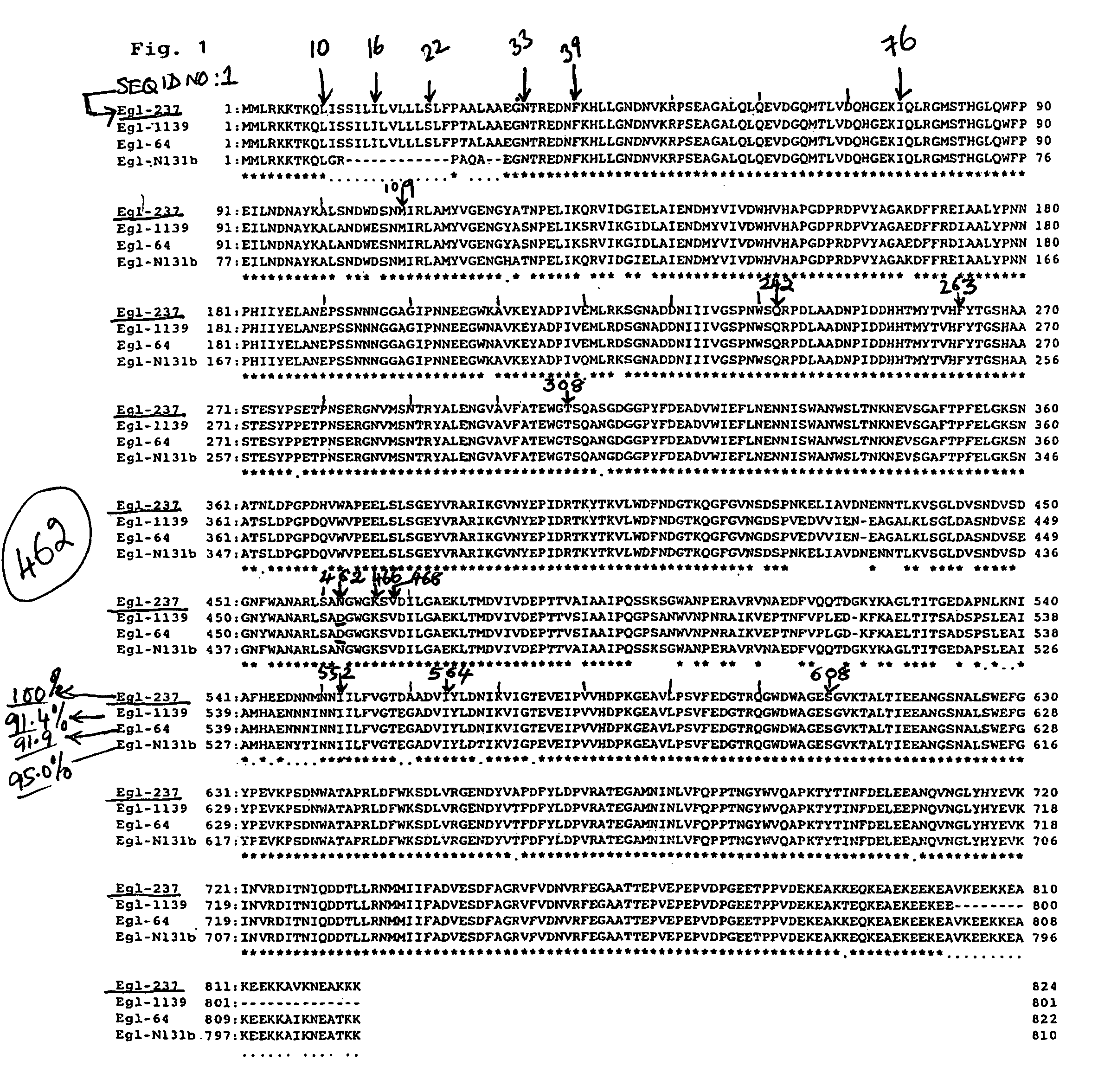Alkaline cellulase variants
a cellulase and alkaline technology, applied in the field of alkaline cellulase variants, can solve the problems that the productivity of alkaline cellulase on an industrial scale cannot reach a satisfactory level, and achieve the effects of high secretion capacity, enhanced specific activity, and efficient production
- Summary
- Abstract
- Description
- Claims
- Application Information
AI Technical Summary
Benefits of technology
Problems solved by technology
Method used
Image
Examples
example 1
Preparation of a Variant of an Alkaline Cellulase Gene
[0065]First, in order to obtain an alkaline cellulase variant permitting an increase in the production amount of the alkaline cellulase, random mutagenesis in a region of the alkaline cellulase gene was conducted by the Error-Prone PCR method, whereby the library of the variants was constructed. From the variants thus obtained, a variant effective for improving the production amount of the alkaline cellulase was selected. After determination of the mutation sites by nucleotide sequencing, a multiple variant was constructed by random mutagenesis or site-specific mutagenesis at the mutation sites by using appropriate primers. As the template DNA, an alkaline cellulase gene derived from the Bacillus sp. strain KSM-S237 introduced in a plasmid, pHY300PLK, was employed.
[0066]As the mix primers for random mutagenesis were employed Ile16X (Primer 1, SEQ. ID NO:3, X means another amino acid), Phe39X (Primer 2, SEQ. ID No:4), Ile76X (Prim...
example 2
[0070]By using 5 μL of the DNA mixture obtained in Example 1, the DNA was introduced into the Bacillus subtilis strain ISW1214 according to Chang and Cohen (Mol. Gen. Gent., 168, 111–115, 1979) whereby the corresponding transformant was obtained. Specifically, after shaking B. subtilis strain ISW1214 in a 50 mL of LB medium at 37° C. for about 2 hours (absorbance at 600 nm: 0.4), the cells were collected by centrifugal separation (at 7000 rpm for 15 minutes) at room temperature and suspended in a 5 mL of SMMP [0.5M sucrose, 20 mM disodium maleate, 20 mM magnesium chloride 6 hydrate, 35% (w / v) “Antibiotic Medium 3” (Difco)]. To the resulting suspension was added 500 μL of a lysozyme solution (30 mg / mL) dissolved in an SMMP solution, and the resulting solution was incubated at 37° C. for 1 hour. Then, protoplasts were collected by centrifugal separation (at 2800 rpm, for 15 minutes) at room temperature and suspended in 5 mL of SMMP to give a protoplast solution. To 0.5 mL of the proto...
example 3
Determination of Nucleotide Sequence
[0071]The nucleotide sequence of the cellulase gene inserted in the plasmids obtained in Example 2 was confirmed using “377DNA Sequencer” (product of Applied Biosystems).
PUM
| Property | Measurement | Unit |
|---|---|---|
| Fraction | aaaaa | aaaaa |
| Fraction | aaaaa | aaaaa |
| Fraction | aaaaa | aaaaa |
Abstract
Description
Claims
Application Information
 Login to View More
Login to View More - R&D
- Intellectual Property
- Life Sciences
- Materials
- Tech Scout
- Unparalleled Data Quality
- Higher Quality Content
- 60% Fewer Hallucinations
Browse by: Latest US Patents, China's latest patents, Technical Efficacy Thesaurus, Application Domain, Technology Topic, Popular Technical Reports.
© 2025 PatSnap. All rights reserved.Legal|Privacy policy|Modern Slavery Act Transparency Statement|Sitemap|About US| Contact US: help@patsnap.com


